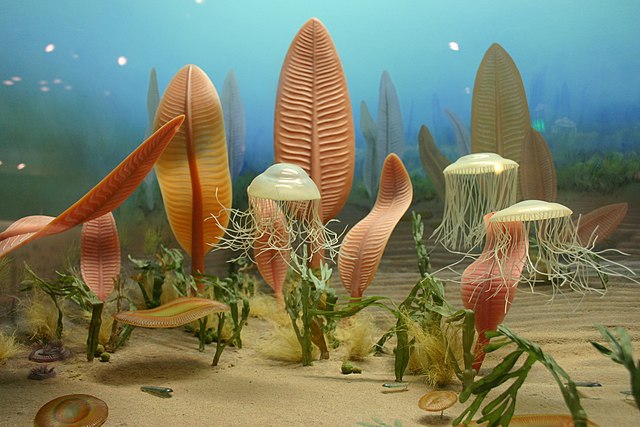The cloudinids, an early metazoan family containing the genera Acuticocloudina, Cloudina and Conotubus, lived in the late Ediacaran period about 550 million years ago. and became extinct at the base of the Cambrian. They formed millimetre-scale conical fossils consisting of calcareous cones nested within one another; the appearance of the organism itself remains unknown. The name Cloudina honors the 20th-century geologist and paleontologist Preston Cloud.
Restoration of Cloudina hartmannae with speculative mouth parts
The Ediacaran biota is a taxonomic period classification that consists of all life forms that were present on Earth during the Ediacaran Period. These were enigmatic tubular and frond-shaped, mostly sessile, organisms. Trace fossils of these organisms have been found worldwide, and represent the earliest known complex multicellular organisms. The term "Ediacara biota" has received criticism from some scientists due to its alleged inconsistency, arbitrary exclusion of certain fossils, and inability to be precisely defined.
Life in the Ediacaran Period, as imagined by researchers in 1980.
Palaeontologist Guy Narbonne examining Ediacaran fossils in Newfoundland
Modern cyanobacterial-algal mat, salty lake on the White Sea seaside
A reconstruction of the Ediacaran biota at the Field Museum in Chicago





